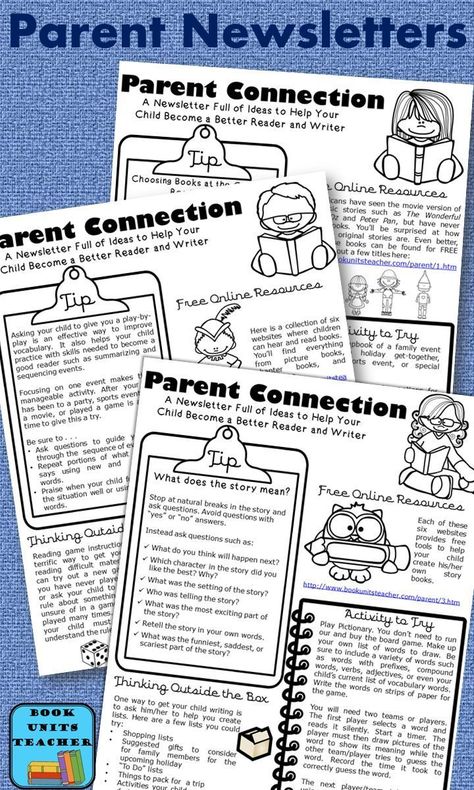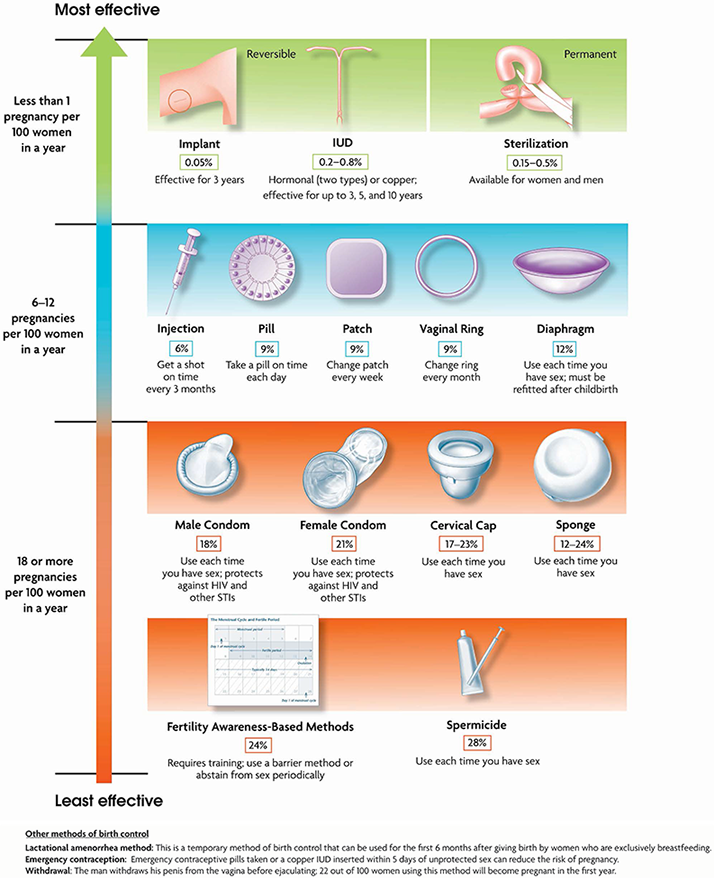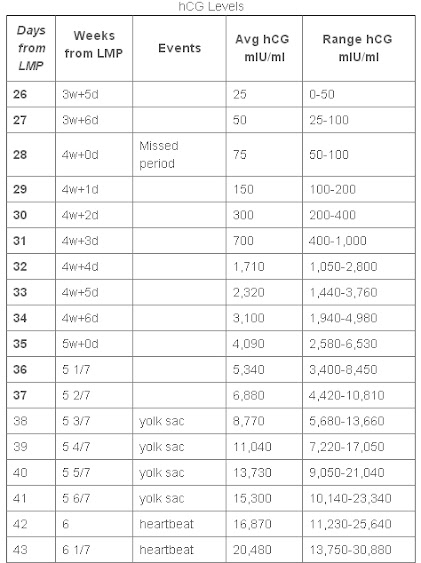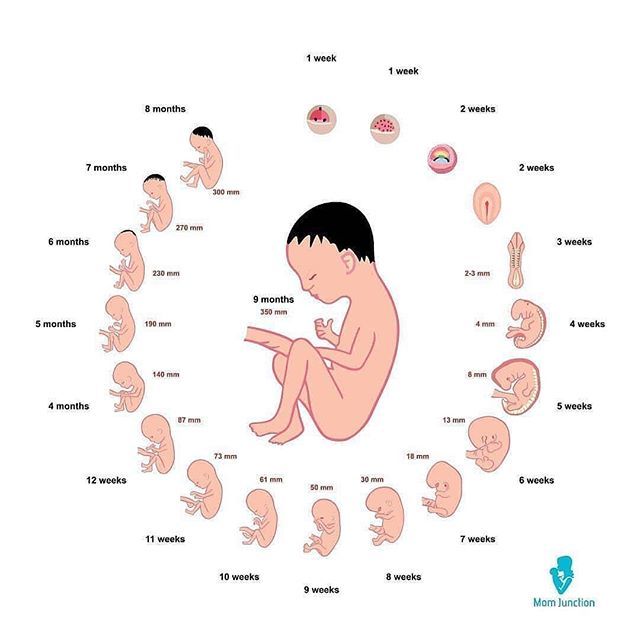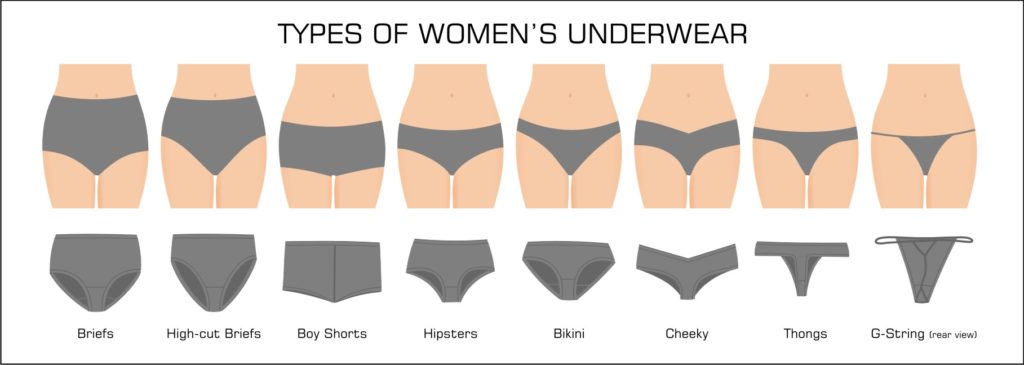How to help your child improve handwriting
How to Improve Kids’ Handwriting
Handwriting involves a complex set of skills. But there are some simple ways you can help if your child has messy handwriting. Learn how low-cost tools like pencil grips can help your child improve handwriting. And get ideas for ways to add some fun to handwriting practice for kids.
1. Buy a pencil grip.
Does your child’s hand get tired easily? Pencil grips are low-cost tools that can help kids learn to hold a pencil properly. These tools can help kids write more neatly without their hand muscles getting so tired.
There are different kinds of pencil grips. You can find some designs at office supply stores. If you have trouble finding the right grip for your child, you may need to look in online catalogs for .
Watch an expert show how pencil grips can give kids more control.
2. Make a slant board.
Does your child hunch over when writing? Poor posture can make it harder to write neatly. You can help by encouraging your child to write on a slanted surface. The right slant can improve the position of your child’s wrist and shoulder.
You can buy a slant board. Or you can make one by turning a three-inch three-ring binder sideways, so the surface slopes down toward your child. Use clips or a big rubber band to keep papers from slipping off.
3. Raise the lines on lined paper.
Does your child have trouble staying within the lines? Use glue or puffy paint to trace the lines. When dry, the raised lines help kids learn to stay within the lines. Kids can feel it if they “bump” into the lines with their pencil.
Add some fun by using sparkly glue or letting your child choose which puffy paint to use.
Download free handwriting sheets your child can use for practice.
4. Use a spacing tool.
Does your child leave too little or too much space between words? Use a wooden craft stick as a spacing tool. After writing a word, have your child put the stick at the end, pointing straight up and down. Start the next word on the other side of the stick.
Start the next word on the other side of the stick.
Ask your child to decorate the stick, like drawing a face on the top or adding a cool sticker. Encourage your child to keep it simple so the spacing tool looks fun but not distracting.
5. Play “Sky, Grass, Dirt.”
Does your child have trouble making letters the correct size? For example, does your child write hOpS instead of hops? Practice using the right letter sizes by playing a game called “Sky, Grass, Dirt.” Here are two ways you can play using a word like hops:
Use hand signals
- For tall letters like h, point your thumb up to the sky.
- For short letters like o and s, make a fist to indicate grass.
- For descending letters like p, point a thumb down to the dirt.
- Use these hand signals to quiz your child about different letters.
Use highlighters on lined paper
- For the sky, color in a blue row between the top and middle lines.
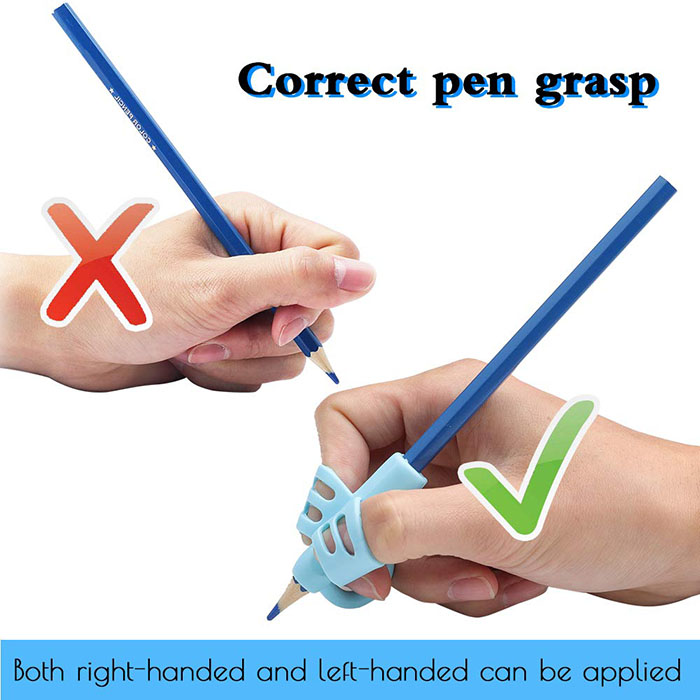
- For the grass, color in a green row between the middle and bottom lines.
- For the dirt, color in a brown or orange row below the bottom line.
- Use the striped paper to practice writing letters and words.
6. Talk with your child’s teacher.
When kids struggle with handwriting, it doesn’t mean they’re not smart. But messy handwriting can get in the way of learning, since it can keep kids from showing what they know.
Ask the teacher if handwriting challenges are making it hard for your child to learn. If they are, you can come up with a plan together for helping your child improve.
There are different things teachers can do for kids who need help with handwriting. For example, the teacher could let your child use special lined paper or have extra time to finish written work.
Technology can help too, like typing instead of handwriting. And in some cases, schools provide occupational therapy, which can help kids build fine motor skills.
Learn more
- Read about occupational therapy.
- See how drawing can help with handwriting.
- Get tips for helping young kids learn to write.
Related topics
Reading and writing
Strategies and tips
How to Improve Handwriting with Kids
You are here: Home / How to Improve Handwriting Skills with Kids
Like what you read? Share it!
12.4K shares
Handwriting skills are an important developmental task and activity for kids. Through handwriting, they are able to express themselves and communicate with the world around them. Improving their penmanship, legibility, pencil grasp, and working on problem areas are all important things that need to be addressed, whether you are a homeschool parent, teacher, therapist, or just supplementing your child's classroom activities.
I wanted to share some ways on how to improve handwriting skills with kids and have rounded up all the posts I have written on this topic here on GHOK.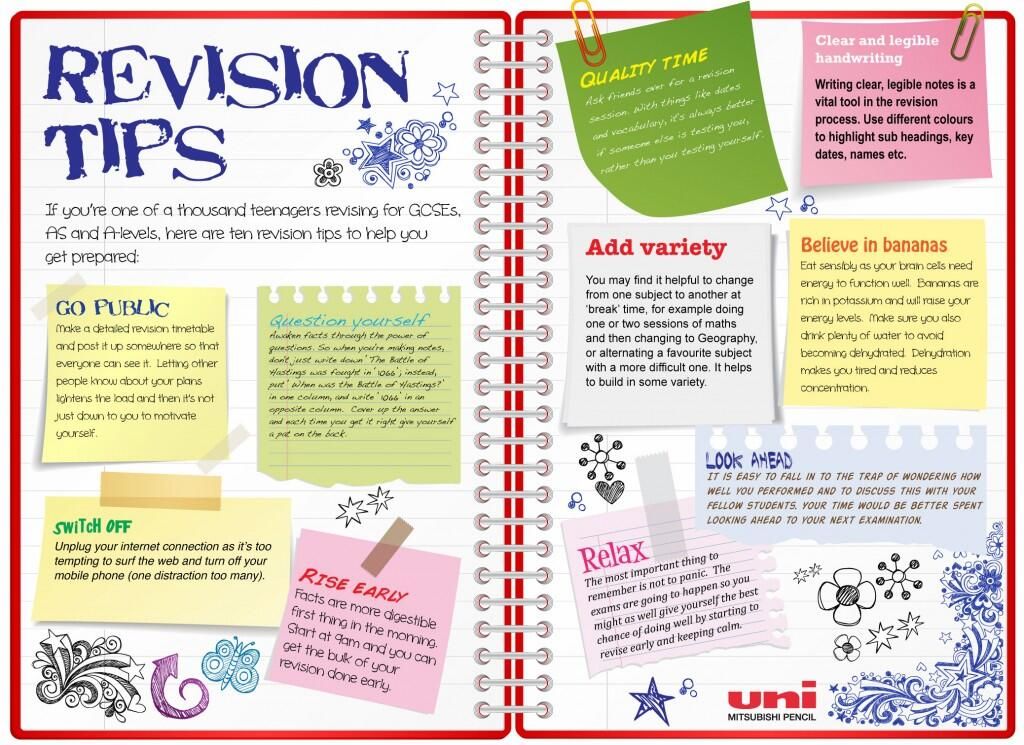
How to Improve Handwriting Skills with Kids
The first step in learning about handwriting skills is to understand the importance of fine motor development and how pencil grasp develops. Here are some posts I have written on that topic:
- Typical Fine Motor Developmental Milestones for Ages 0-6 – Also comes with a free printable of each age level.
- You can also find more information on fine motor skill development.
- Which Fine Motor Skills Are Important for Handwriting?
Pencil Grasp Development
There are two types of pencil grasps that are considered efficient for handwriting; the tripod and the quadruped grasp. You can learn more about those two types of grasp below.
- Proper Pencil Grasp for Writing – Comes with a step by step developmental sequence and explanation as well as pictures of each type of grasp.
- 5 Tips for Pencil Grasp Development with Preschoolers – This is a guest post I wrote over on Learning 2 Walk about pencil grasp as well.
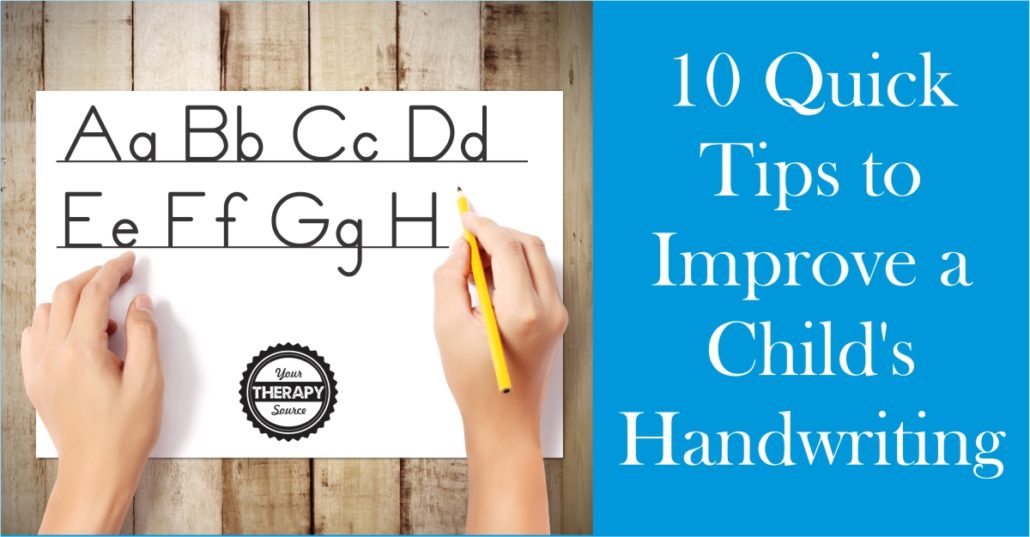
- Pencil Grasp Development Handout – Free Download
- What is Pincer Grasp? – Pincer grasp is an important part of handwriting skills and pencil grasp.
- The Foundational Skills Needed for Handwriting Mechanics – a look at underlying skills needed for pencil grasp.
- 5 Fine Motor Activities to Improve Pencil Grasp – Guest post on Learning 2 Walk
- 2 Pincer Grasp Fine Motor Activities for Toddlers
- 5 Activities for Pincer Grasp Development
- 15 Hands-On Activities to Promote Pincer Grasp
Pre-Writing Skills for Toddlers and Preschoolers
Pre-writing skills are the pre-cursor to handwriting. They consist of an age-appropriate sequence of lines and shapes that toddlers and preschoolers learn in order to, later on, form letters and numbers.
- 6 Pre-writing Activities for Preschoolers – This was a 6-week series I did on my blog with activities to encourage pre-writing lines and shapes.
- 12 Fun Ways to Practice Handwriting with Preschoolers – Hands-on ideas for practice handwriting and pre-writing skills
- 10 Hands-On Ways to Practice Pre-Writing Lines
- On The Farm Prewriting Packet
Basic Shapes for Beginners – A Hands-on Approach to Pre-writing Strokes for Kids is an ebook I wrote to get you started with pre-writing skills at home for ages 2-5.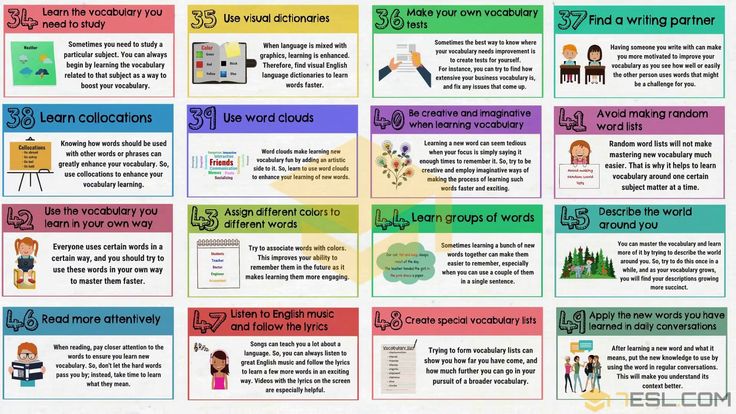
Teaching Handwriting Skills at Home
If your child is in Occupational Therapy it is important to practice the skills they are working on at home. This post discusses some ways to do that.
Activities to Practice Handwriting Skills at Home
For homeschoolers, I have a special series on my site with how to teach handwriting to your preschooler through elementary age student.
- Teaching Handwriting in Your Homeschool – Preschool
- Teaching Handwriting in Your Homeschool – Kindergarten
- Teaching Handwriting in Your Homeschool – Elementary
- How to Include Handwriting in your Tot-School & Preschool
Teaching Cursive Handwriting
Cursive can be a great alternative for children who are struggling with print. Plus it's important to at least teach your child how to sign their name in cursive. Here are some cursive resources for you.
- Should I Teach Cursive or Print Handwriting First?
- Cursive Pre-Writing Lines & Strokes – Free Printable
- Is Cursive Handwriting Still Important to Learn?
Handwriting Difficulty Tips & Tricks
You've most likely come to this page because your child is struggling with handwriting in some way.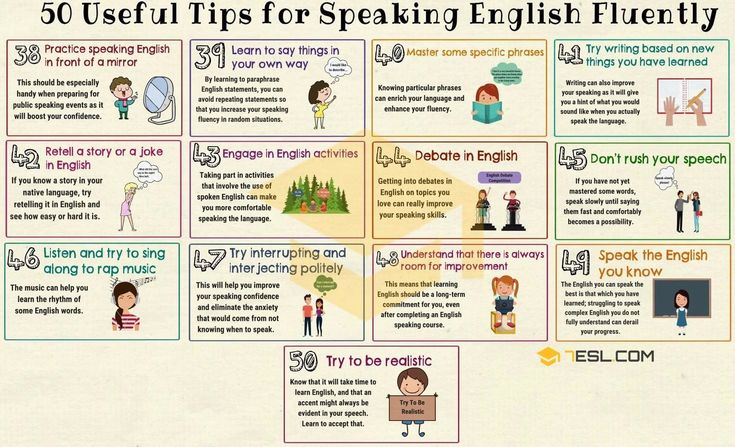 Here are some tips for some common handwriting problems.
Here are some tips for some common handwriting problems.
- 5 Tips to Correct Your Child's Pencil Grasp
- How to Fix Poor Spacing in Handwriting
- How to Fix Poor Letter Formations in Handwriting
- How to Stop Letter Reversals in Handwriting
More Handwriting Resources
- 5 Benefits of a Slant Writing Board
- Handwriting Warm Up Activities
- DIY Handwriting Toolkit
- 5 Mistakes to Avoid When Introducing Handwriting to Kids
- The Handwriting Book
For more tips and ideas, you can sign up to receive my 5 days of handwriting and pre-writing skills e-mail series. It's completely free and you'll receive all 5 days worth of e-mails in your inbox.
Just enter your e-mail address below and click the green “click here” button. You'll need to head over to your inbox and confirm you want to receive the e-mail series. Then look for a welcome e-mail in your inbox (double check your spam folder or promotions tab for Gmail users if you don't see anything in your inbox).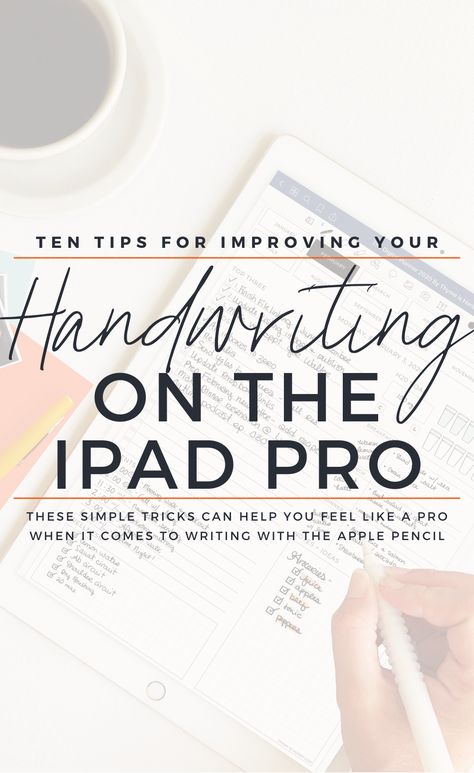
I also have a Pinterest board dedicated to Handwriting Skills and Activities that you can follow for more ideas.
And be sure to pin this post or bookmark it and check back for more posts that are added as I write them.
Like what you read? Share it!
12.4K shares
CONTENT DISCLAIMER: Heather Greutman is a Certified Occupational Therapy Assistant.All information on the Website is for informational purposes only and is not a replacement for medical advice from a physician or your pediatrician. Please consult with a medical professional if you suspect any medical or developmental issues with your child. The information on the Websites does not replace the relationship between therapist and client in a one-on-one treatment session with an individualized treatment plan based on their professional evaluation.
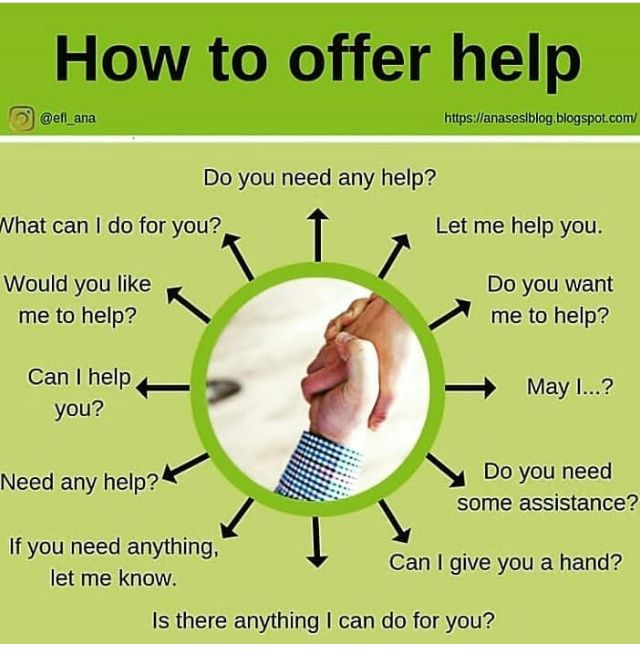 The information provided on the Website is provided “as is” without any representations or warranties, express or implied.
The information provided on the Website is provided “as is” without any representations or warranties, express or implied.
Do not rely on the information on the Website as an alternative to advice from your medical professional or healthcare provider. You should never delay seeking medical advice, disregard medical advice, or discontinue medical treatment as a result of any information provided on the Website. All medical information on the Website is for informational purposes only.
All activities outlined on the Website are designed for completion with adult supervision. Please use your own judgment with your child and do not provide objects that could pose a choking hazard to young children. Never leave a child unattended during these activities. Please be aware of and follow all age recommendations on all products used in these activities. Growing Hands-On Kids is not liable for any injury when replicating any of the activities found on this blog.
YOUR RESPONSIBILITY
The Website was developed strictly for informational purposes. You understand and agree that you are fully responsible for your use of the information provided on the Website. Growing Hands-On Kids makes no representations, warranties, or guarantees. You understand that results may vary from person to person. Growing Hands-On Kids assumes no responsibility for errors or omissions that may appear on the Website.
You understand and agree that you are fully responsible for your use of the information provided on the Website. Growing Hands-On Kids makes no representations, warranties, or guarantees. You understand that results may vary from person to person. Growing Hands-On Kids assumes no responsibility for errors or omissions that may appear on the Website.
How to improve a child's handwriting? Methods and exercises
Poor and illegible handwriting in a child can lead to low grades, teachers' dissatisfaction and low self-esteem. If your child has flaws in the letter: too small or too large a font, a strong slope, poorly readable letters, then it is worth working to improve the situation. And it will be great if you do it together.
First, specify the reason for the student's poor handwriting and try to correct this moment:
1 . Incorrect body position: back, arms and legs
If the child writes crookedly, too much of an inclination or diagonally, moving off the line, then look at how he sits. To write comfortably and the body does not get very tired from sitting at the desk, you need to keep your back straight, both hands should rest on the edge of the table, the brush is straight, the pen or pencil is at an angle of 45 degrees relative to the notebook.
To write comfortably and the body does not get very tired from sitting at the desk, you need to keep your back straight, both hands should rest on the edge of the table, the brush is straight, the pen or pencil is at an angle of 45 degrees relative to the notebook.
The child does not have to exactly fulfill all the requirements at a time, because the posture for writing is individual for everyone, but at least you need to monitor his posture so that he does not twist his back too much. nine0003
2. Insufficiently comfortable workplace and writing materials
If the table is too small or too large, the light falls from the wrong angle (and it should come from the left hand side if the child writes right - and vice versa), the chair is uncomfortable and without a back, and the pen is too thin or thick, then it will be difficult for the child to write beautifully and correctly.
Provide him with a good workplace and comfortable writing materials, and then progress will be noticeable even without additional exercises. nine0003
nine0003
3. Poorly developed fine motor skills
Only exercises for its development will help here. If you see that the letter is difficult for the child in itself and he writes slowly, then try several times a week, but it’s better to do simple exercises with him every day to develop fine motor skills (we’ll talk about them a little later).
There are other causes of poor handwriting in a child, but they are more individual.
Now let's see what exercises you can do with a student to improve his handwriting and inspire him. But first of all advice: Praise your child as often as possible and create a friendly atmosphere for learning. Then it will be easier and more interesting for him to try to write well.
Exercises that improve writing technique
Exercises for clarity of writing (to do this, either find on the Internet or buy copybooks and writing samples)
-
Display wavy lines, dashes and other characters.
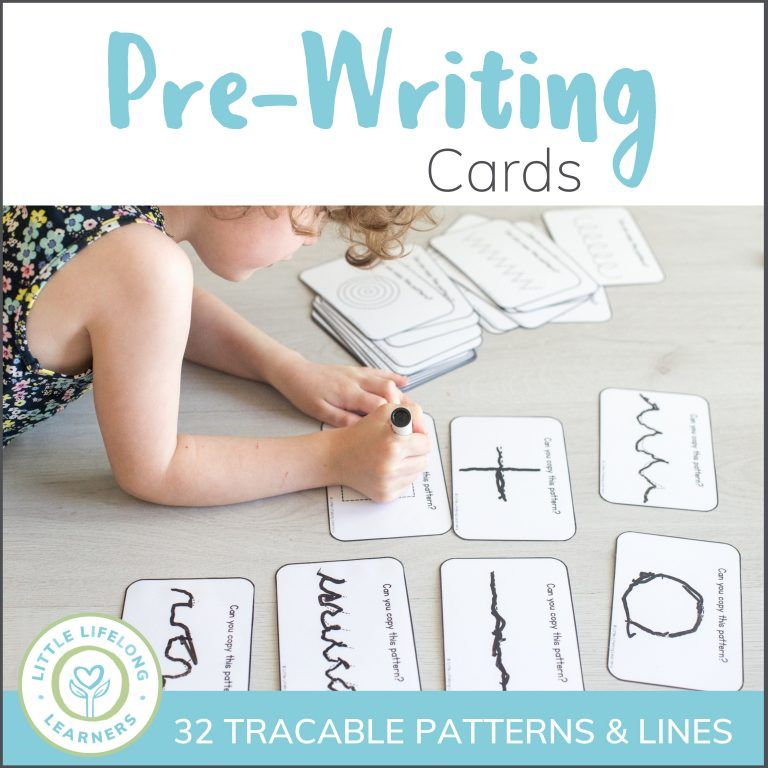 This is the easiest to start with. Let the child draw waves of different lengths and heights on lined paper. Ask him different tasks (show different lines and ask him to copy the images exactly). For this, prescriptions are not needed, only samples. nine0003
This is the easiest to start with. Let the child draw waves of different lengths and heights on lined paper. Ask him different tasks (show different lines and ask him to copy the images exactly). For this, prescriptions are not needed, only samples. nine0003
-
We write the alphabet and connect the letters. Several times a week, ask your child to write the entire alphabet from beginning to end in uppercase and lowercase letters. So he will better remember how this or that letter is written. Then write combinations of letters with the correct connections. This also needs to be constantly registered several times. The main thing in these trainings is to fill your hand and make the handwriting more clear and understandable.
-
Drawing. Ask your child to draw a house with lots of small windows or a mosaic, anything that needs fine detail. This is not only useful for neat handwriting, but also very interesting. From small details, if you have imagination, you can create entire worlds.
 nine0003
nine0003
In addition to the usual copywriting, which can quickly get boring, there are more interesting activities to improve handwriting. One of the most beautiful and interesting is calligraphy. Calligraphy is not only a practice of writing, but also creativity, passion, art. See what progress the guys are making on the calligraphy course at IQ007.
Fine motor exercises
-
Modeling is the best way to do this: from plasticine, clay or salt dough. Let the child sculpt whatever he wants, but control the process and ask for more small details. nine0003
-
We sort through the cereals. This is a great way to spice up your child's fingers - give him several types of cereals mixed in one container, and ask him to separate each type. This, by the way, develops not only fine motor skills, but also perseverance, obedience, and the ability to concentrate.
-
Lace. Try with your child to learn how to tie nautical knots or lace up sneakers in different interesting ways.
 There are many such videos on YouTube. nine0003
There are many such videos on YouTube. nine0003 -
Puzzles and mosaics. Buy a big puzzle and collect it with the whole family. Perfectly develops fine motor skills, and thinking, and imagination.
-
Gymnastics for hands. The familiar rhyme “We wrote, we wrote, our fingers got tired” is not only a sweet memory of the lessons in elementary school, but also a great exercise for relaxing and developing fingers and hands. On the first line, you need to alternately squeeze and unclench your fingers. On the second line - rotate the brushes in a circle. And so several times. nine0003
How to correct a child's handwriting
06/13/2021
The child diligently draws letters, but still it turns out “like a chicken paw”? A familiar picture for most parents. What to do? Indeed, from numerous rewritings it only gets worse - the baby gets tired, gets confused, and in the notebook, in addition to scribbles, there is also “daub”!
Contents:
- Such a common problem
- How to help a child?
- What does handwriting depend on?
- Development of graphic skills and writing speed
- Three conditions for beautiful handwriting
- Handwriting exercises
- Finger charger
Such a common problem
Illegible handwriting can often lead to school failure and, as a result, loss of motivation to learn.
How to help a child?
The most important thing is to calm down and understand that it is very difficult for the baby now. It's like if you yourself took a pen in your non-working hand (left for right-handed people and vice versa) and wrote as many letters as your first grader has to write! Do not force the child to write until "until it turns out beautifully", but switch his attention to interesting games.
And a few more non-obvious tips. For notebooks, buy simple plastic covers: they do not slip on the surface of the table or desk.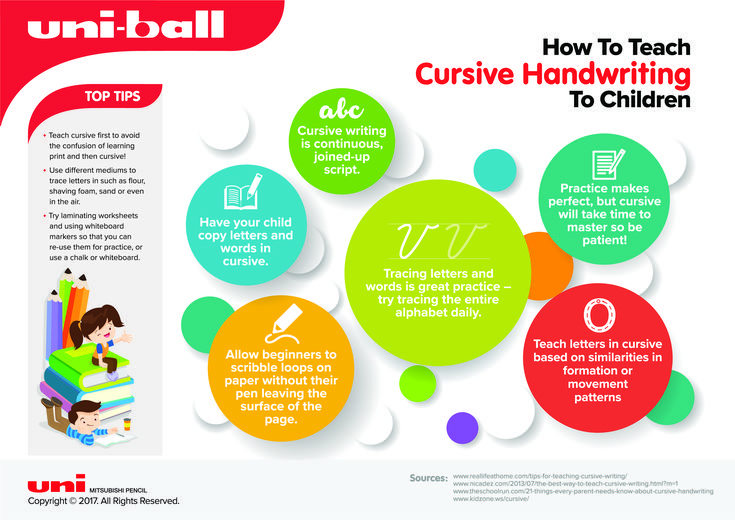 The beauty of handwriting also depends on the model of the chosen pen. For younger students, very long or very short models, as well as wide ribbed ones, are not suitable. The ideal length of the writing instrument is about 15 cm, and the ink in the core should write easily and not smudge the paper. nine0003
The beauty of handwriting also depends on the model of the chosen pen. For younger students, very long or very short models, as well as wide ribbed ones, are not suitable. The ideal length of the writing instrument is about 15 cm, and the ink in the core should write easily and not smudge the paper. nine0003
What does handwriting depend on?
Correct posture when writing is very important. The child should sit exclusively with a straight back and shoulders. He should lean with his back on the back of the chair, and place his feet on the floor or on the footboard, stand, straight, parallel to each other. The "correct" tabletop:
- is located slightly below the level of the student's chest;
- is at least 30 cm away from the eyes;
- is separated from the body (stomach) at a distance of at least a palm. nine0047
The workbook should lie on the table at an angle of 10-15°, this makes it easier to move the hand along the line in the direction from left to right.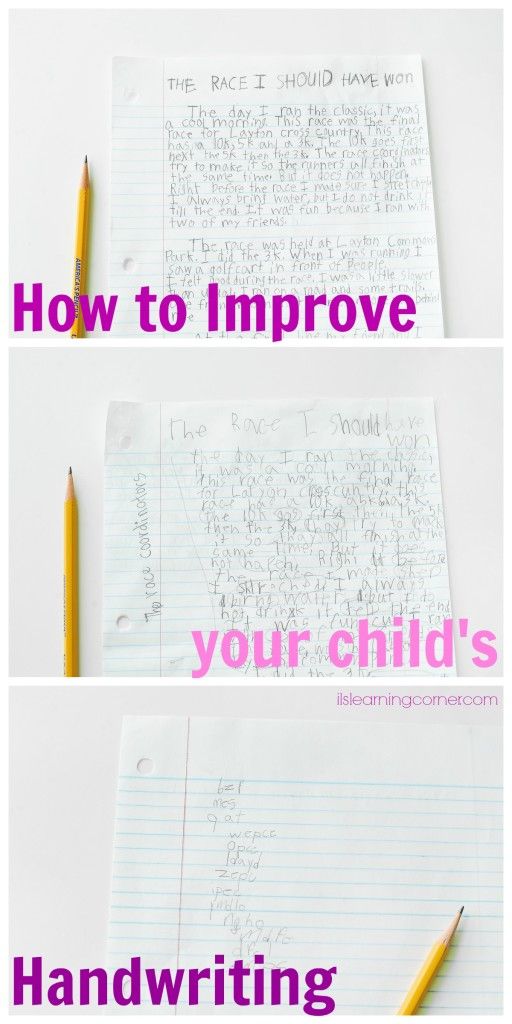 For a right-hander, it is located, leaning to the right, for a left-hander - to the left. As the sheet fills up, the notebook should be slightly pushed up, and directly while writing it should be supported with a non-working hand: at the beginning of work from below, and after filling the page more than half - from above. The elbow of the writing hand should not hang from the table or desk, the second hand should also lie on the table, creating a comfortable stop. nine0003
For a right-hander, it is located, leaning to the right, for a left-hander - to the left. As the sheet fills up, the notebook should be slightly pushed up, and directly while writing it should be supported with a non-working hand: at the beginning of work from below, and after filling the page more than half - from above. The elbow of the writing hand should not hang from the table or desk, the second hand should also lie on the table, creating a comfortable stop. nine0003
Correct handle position is equally important. If the child immediately learns to hold it or a pencil correctly, his hand will not get tired and experience tension. To properly hold the writing instrument, you need to bend your thumb and forefinger, then move your thumb slightly to the side parallel to the table top, while it should not be pressed against the pencil by the phalanx. Make sure the tip of the pencil is pointing straight at your shoulder. The wrist should be on the table.
Formation of graphic skills and writing speed
In order to write beautifully and quickly, a child already in elementary school must be able to correctly select a letter to the dictated sound, write without interruption. This is a graphic skill that not only makes handwriting more enjoyable, but also increases the speed of writing.
This is a graphic skill that not only makes handwriting more enjoyable, but also increases the speed of writing.
The ideal writing speed is considered to be 4-6 words per minute for students in the first and second grades, 12 words in the same period of time for older children in the third and fourth grades. nine0003
Three conditions for beautiful handwriting
There are three conditions, compliance with which allows us to say that handwriting is beautiful: with tails "like c, f and others, and capital letters should be 2 times higher than lowercase letters;
In addition, you need to correctly connect between letters. It can be "upper" or "lower" and both are considered valid and valid. nine0003
Exercises to improve handwriting
Graphic exercises help to develop endurance to stress when writing, correct the baby's handwriting, allowing you to master the accuracy of movements. These workouts are good because the baby perceives them with interest and begins to write more evenly and faster without much effort on his part. Regular classes with a child, at least three times a week, can improve handwriting after a month.
For training, you will need simple and colored pencils (felt-tip pens, gel pens) and an album sheet. The most effective exercise is to draw straight, even lines along the wide side of the sheet. When performing exercises, you need to monitor your hand and the correct position of the pencil in it. The exercise is repeated until a satisfactory result is obtained: all lines must be even. To make it more fun for a child to draw the same straight lines, you can do this with pencils of different colors. By the way, it will be easier for the baby to draw the first lines if you put auxiliary points on the sheet. When the lines become even, gradually complicate the exercise, for example, do hatching or draw waves and zigzags.